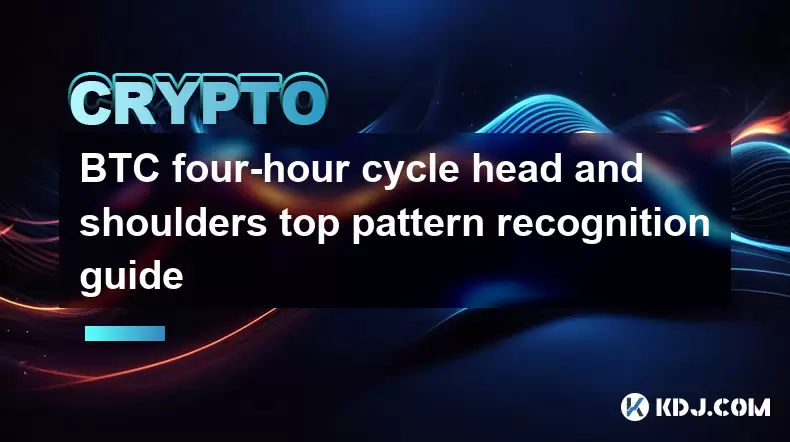-
 Bitcoin
Bitcoin $116600
0.12% -
 Ethereum
Ethereum $4259
5.24% -
 XRP
XRP $3.269
-0.80% -
 Tether USDt
Tether USDt $1.000
0.00% -
 BNB
BNB $805.6
1.49% -
 Solana
Solana $182.0
2.27% -
 USDC
USDC $0.9999
0.01% -
 Dogecoin
Dogecoin $0.2433
6.92% -
 TRON
TRON $0.3361
-0.83% -
 Cardano
Cardano $0.8176
2.77% -
 Hyperliquid
Hyperliquid $43.93
7.66% -
 Chainlink
Chainlink $21.35
9.11% -
 Stellar
Stellar $0.4516
-0.51% -
 Sui
Sui $3.953
2.85% -
 Bitcoin Cash
Bitcoin Cash $572.6
-2.63% -
 Hedera
Hedera $0.2665
1.63% -
 Avalanche
Avalanche $24.50
3.23% -
 Ethena USDe
Ethena USDe $1.001
0.01% -
 Litecoin
Litecoin $121.7
-3.25% -
 Toncoin
Toncoin $3.420
2.01% -
 UNUS SED LEO
UNUS SED LEO $9.006
0.22% -
 Shiba Inu
Shiba Inu $0.00001387
4.90% -
 Uniswap
Uniswap $10.99
-0.28% -
 Polkadot
Polkadot $4.134
4.21% -
 Dai
Dai $1.000
0.00% -
 Pepe
Pepe $0.00001243
4.80% -
 Bitget Token
Bitget Token $4.509
0.19% -
 Cronos
Cronos $0.1576
2.00% -
 Monero
Monero $275.8
1.20% -
 Ethena
Ethena $0.7594
15.99%
BTC four-hour cycle head and shoulders top pattern recognition guide
The head and shoulders top pattern on Bitcoin's four-hour chart signals potential bearish reversals, guiding traders to anticipate price drops after confirmation.
Jun 04, 2025 at 08:07 am

The recognition of a head and shoulders top pattern in the Bitcoin (BTC) four-hour cycle can be a crucial tool for traders looking to anticipate potential price reversals. This pattern, characterized by its distinct shape resembling a head and two shoulders, often signals that a bullish trend may be coming to an end, paving the way for a bearish movement. In this guide, we will delve into the specifics of identifying and confirming this pattern on BTC's four-hour chart, providing traders with the knowledge needed to make informed decisions.
Understanding the Head and Shoulders Top Pattern
The head and shoulders top pattern is a bearish reversal pattern that forms after an uptrend. It consists of three peaks, with the middle peak (the head) being the highest and the two outer peaks (the shoulders) being lower and roughly equal in height. The valleys between these peaks are called the neckline. For a head and shoulders pattern to be valid, the neckline should be horizontal or slightly sloped.
Identifying the Pattern on BTC's Four-Hour Chart
To identify the head and shoulders top pattern on Bitcoin's four-hour chart, traders should follow these steps:
- Locate the left shoulder: Look for the first peak that forms after a sustained uptrend. This peak will be the left shoulder.
- Identify the head: The next peak should be higher than the left shoulder. This is the head of the pattern.
- Spot the right shoulder: After the head, the price should decline to the neckline level and then rise again to form the right shoulder, which should be roughly equal in height to the left shoulder.
- Draw the neckline: Connect the lows of the valleys between the left shoulder and the head, and between the head and the right shoulder. This line is the neckline.
Confirming the Pattern
Confirmation of the head and shoulders top pattern occurs when the price breaks below the neckline after forming the right shoulder. This break should be accompanied by increased volume, signaling strong selling pressure. Traders should watch for the following:
- Price break: The price should decisively break below the neckline.
- Volume increase: The volume should increase as the price breaks the neckline, confirming the bearish sentiment.
- Retest: Sometimes, the price may retest the neckline from below before continuing its downward trend. This retest can serve as a final confirmation of the pattern.
Measuring the Potential Price Target
Once the head and shoulders top pattern is confirmed, traders can estimate the potential price target by measuring the distance from the head to the neckline and then projecting that distance downward from the point where the price breaks the neckline. This gives an approximate target for the bearish move.
Trading Strategies Based on the Pattern
Traders can use the head and shoulders top pattern to implement various trading strategies:
- Short selling: Upon confirmation of the pattern, traders can initiate short positions, expecting the price to decline to the projected target.
- Stop-loss placement: To manage risk, traders should place stop-loss orders just above the right shoulder or the head, depending on their risk tolerance.
- Profit-taking: As the price approaches the projected target, traders can consider taking profits or adjusting their stop-loss to lock in gains.
Technical Indicators to Enhance Pattern Recognition
While the head and shoulders top pattern can be identified visually, traders can use technical indicators to enhance their analysis:
- Moving averages: A bearish crossover of short-term and long-term moving averages can confirm the bearish trend.
- Relative Strength Index (RSI): An RSI reading above 70 indicates overbought conditions, supporting the bearish reversal signaled by the head and shoulders pattern.
- MACD: A bearish divergence between the price and the MACD can further confirm the potential for a downward move.
Practical Example on BTC's Four-Hour Chart
To illustrate the application of the head and shoulders top pattern, consider a hypothetical scenario on Bitcoin's four-hour chart:
- Left shoulder: Bitcoin reaches a peak at $45,000 after an uptrend.
- Head: The price then rises to a higher peak at $50,000.
- Right shoulder: After declining to the neckline at $40,000, the price rises again to $45,000, forming the right shoulder.
- Neckline break: The price breaks below the neckline at $40,000 with increased volume, confirming the pattern.
- Price target: The distance from the head ($50,000) to the neckline ($40,000) is $10,000. Projecting this distance downward from the neckline break at $40,000 gives a target of $30,000.
Common Pitfalls and Considerations
While the head and shoulders top pattern can be a powerful tool, traders should be aware of potential pitfalls:
- False breakouts: Sometimes, the price may break the neckline but quickly reverse, leading to a false breakout.
- Volume discrepancies: If the volume does not increase significantly during the neckline break, the pattern's reliability may be questionable.
- Market volatility: High volatility can lead to erratic price movements, making pattern recognition more challenging.
Frequently Asked Questions
Q: Can the head and shoulders top pattern be used on other timeframes besides the four-hour chart?
A: Yes, the head and shoulders top pattern can be applied to various timeframes, including daily, weekly, and even shorter intervals like one-hour charts. The key is to ensure that the pattern is clearly formed and confirmed on the chosen timeframe.
Q: How reliable is the head and shoulders top pattern for predicting Bitcoin price movements?
A: While the head and shoulders top pattern is a well-recognized and often reliable bearish reversal signal, its effectiveness can vary. Traders should use it in conjunction with other technical indicators and market analysis to increase the probability of successful trades.
Q: What should traders do if the price breaks the neckline but quickly reverses back above it?
A: In the event of a false breakout, traders should wait for further confirmation before acting. If the price quickly reverses back above the neckline, it may indicate that the bearish trend is not as strong as initially thought. Traders can then reassess the market conditions and look for additional signals before making trading decisions.
Q: Are there any specific tools or software recommended for identifying the head and shoulders top pattern on BTC's four-hour chart?
A: Many trading platforms and charting software, such as TradingView, MetaTrader, and Coinigy, offer tools for drawing and analyzing head and shoulders patterns. These platforms often include features like trend lines, volume indicators, and customizable alerts that can aid in pattern recognition and confirmation.
Disclaimer:info@kdj.com
The information provided is not trading advice. kdj.com does not assume any responsibility for any investments made based on the information provided in this article. Cryptocurrencies are highly volatile and it is highly recommended that you invest with caution after thorough research!
If you believe that the content used on this website infringes your copyright, please contact us immediately (info@kdj.com) and we will delete it promptly.
- Solana Meme Coin Presales: Hype or the Next Big Thing?
- 2025-08-10 02:50:12
- Pi Network, Altcoin Season, and Breakout Tokens: What's Hot in 2025?
- 2025-08-10 02:50:12
- Decoding Crypto Presales: Is Cold Wallet the New Neo Pepe?
- 2025-08-10 02:30:12
- PEPE's Moonshot Ambitions: Will the Memecoin Rally Continue?
- 2025-08-10 03:50:11
- Dogecoin, ROI, and the Meme Coin Mania: Is Little Pepe the Next Big Thing?
- 2025-08-10 03:50:11
- Cryptos, 2025, Market Caps: Riding the Next Wave
- 2025-08-10 02:30:12
Related knowledge

What are the key features of Bitcoin?
Aug 10,2025 at 02:50am
Decentralization and Peer-to-Peer NetworkOne of the most defining characteristics of Bitcoin is its decentralized nature. Unlike traditional financial...

Can the Bitcoin protocol be changed?
Aug 07,2025 at 01:16pm
Understanding the Bitcoin ProtocolThe Bitcoin protocol is the foundational set of rules that govern how the Bitcoin network operates. It defines every...

What happens to Bitcoin transactions once they are confirmed?
Aug 09,2025 at 05:22am
Understanding Bitcoin Transaction ConfirmationWhen a Bitcoin transaction is initiated, it is broadcast to the network and placed in a pool of unconfir...

How are Bitcoin transactions verified?
Aug 08,2025 at 06:57am
Understanding Bitcoin Transaction VerificationBitcoin transactions are verified through a decentralized network of nodes and miners that ensure the le...

How does decentralization make Bitcoin secure?
Aug 08,2025 at 09:35am
Understanding Decentralization in BitcoinDecentralization is a foundational principle of Bitcoin's architecture and plays a critical role in its secur...

What are some common misconceptions about Bitcoin?
Aug 07,2025 at 07:22pm
Bitcoin is Just Like Regular MoneyA widespread misconception is that Bitcoin functions identically to traditional fiat currencies like the US dollar o...

What are the key features of Bitcoin?
Aug 10,2025 at 02:50am
Decentralization and Peer-to-Peer NetworkOne of the most defining characteristics of Bitcoin is its decentralized nature. Unlike traditional financial...

Can the Bitcoin protocol be changed?
Aug 07,2025 at 01:16pm
Understanding the Bitcoin ProtocolThe Bitcoin protocol is the foundational set of rules that govern how the Bitcoin network operates. It defines every...

What happens to Bitcoin transactions once they are confirmed?
Aug 09,2025 at 05:22am
Understanding Bitcoin Transaction ConfirmationWhen a Bitcoin transaction is initiated, it is broadcast to the network and placed in a pool of unconfir...

How are Bitcoin transactions verified?
Aug 08,2025 at 06:57am
Understanding Bitcoin Transaction VerificationBitcoin transactions are verified through a decentralized network of nodes and miners that ensure the le...

How does decentralization make Bitcoin secure?
Aug 08,2025 at 09:35am
Understanding Decentralization in BitcoinDecentralization is a foundational principle of Bitcoin's architecture and plays a critical role in its secur...

What are some common misconceptions about Bitcoin?
Aug 07,2025 at 07:22pm
Bitcoin is Just Like Regular MoneyA widespread misconception is that Bitcoin functions identically to traditional fiat currencies like the US dollar o...
See all articles

























































































